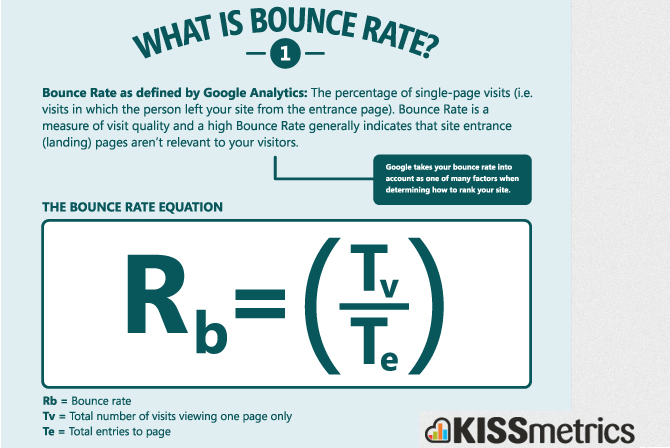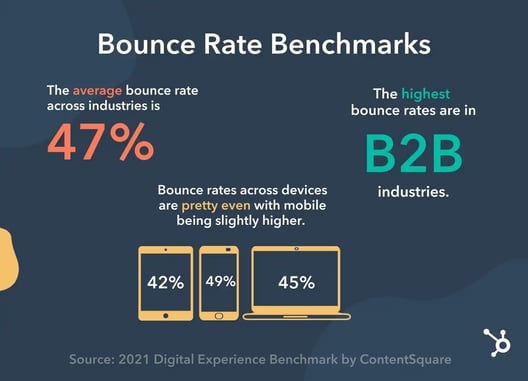Uncover the mystery of bounce rate – how it impacts website success and what you can do to lower it.

Image courtesy of via DALL-E 3
Table of Contents
- Introduction: What is Bounce Rate?
- Understanding Website Visits
- Defining Bounce Rate
- How to Calculate Bounce Rate
- Factors That Affect Bounce Rate
- Why People Bounce
- Tips to Reduce Bounce Rate
- Measuring Success: Monitoring Bounce Rate
- Conclusion: Importance of Understanding Bounce Rate
- Frequently Asked Questions (FAQs)
Introduction: What is Bounce Rate?
Imagine you have a favorite website where you love to play games or watch videos. Now, think about what happens when you visit that website. You click on a link, look around a bit, and then decide to leave. That’s where the concept of bounce rate comes in!
Bounce rate is a term used to describe how many people visit a website but leave after only looking at one page. It’s like going to a party, taking a quick look around, and then deciding it’s not for you, so you head home. This bounce rate helps website owners understand how engaging their site is for visitors.
Understanding Website Visits
When someone visits a website, it’s like stepping into a new world on the internet. Just like when you go to a friend’s house to play, a website visit means you are going to explore what’s inside. Websites are made up of different pages, just like rooms in a house, and each time you look at a new page, it’s called a page view.
What is a Website Visit?
Imagine you knock on the door of your friend’s house and they let you in. That’s like visiting a website. You enter the website and start moving around to see what’s there. Every time you move to a different page, it’s like peeking into a new room in your friend’s house.
Different Types of Website Visits
There are different ways people can visit a website. Sometimes, they peek into just one room (or page) and then leave. Other times, they explore many rooms (or pages) to see everything the website has to offer. It’s like deciding whether you want to quickly say hi to your friend or spend more time playing with them in different rooms of the house.
Defining Bounce Rate
When we talk about bounce rate, we’re talking about how many people leave a website after only looking at one page. It’s like going into a store, taking a quick peek, and then deciding it’s not for you and leaving right away. Bounce rate helps website owners understand if their site is keeping visitors interested or if they’re leaving right after arriving.

Image courtesy of www.crazyegg.com via Google Images
Bounce Rate Simplified
Imagine you’re at a party, and you walk in, but after a few minutes, you decide it’s not fun and leave. That’s similar to what bounce rate is on a website. It shows how many people come to a site but don’t stay long enough to explore. A high bounce rate could mean visitors aren’t finding what they’re looking for or don’t like what they see.
Why Bounce Rate Matters
For website owners, bounce rate is a crucial metric to keep an eye on. It helps them understand if their site is appealing to visitors. If the bounce rate is high, it may mean that changes need to be made to the site to keep people interested. By lowering the bounce rate, website owners can improve user engagement and keep visitors around longer.
How to Calculate Bounce Rate
Calculating bounce rate is a simple yet important task for website owners. By understanding how to measure bounce rate, you can better assess the effectiveness of your website in engaging visitors. Let’s break down the process into easy-to-understand steps.
Bounce Rate Formula
To calculate bounce rate, you can use the following straightforward formula:
Bounce Rate = Single-page Visits / Total Visits * 100%
This formula helps you determine the percentage of visitors who leave your website after viewing only one page. By dividing the number of single-page visits by the total number of visits and multiplying by 100%, you get the bounce rate.
Example Calculation
Let’s imagine you have a total of 100 visitors to your website. Out of these, 40 visitors leave after viewing a single page. To calculate the bounce rate:
Bounce Rate = 40 / 100 * 100% = 40%
This means that 40% of the visitors to your website are leaving after only viewing one page. By tracking this metric, you can assess how engaging your website is and make improvements to reduce the bounce rate.
Factors That Affect Bounce Rate
When it comes to bounce rate, there are several factors that can influence whether visitors stay on a website or leave after viewing just one page. Let’s explore some of the key elements that can impact bounce rate.

Image courtesy of www.analytics-ninja.com via Google Images
Content Quality
The quality of the content on a website plays a significant role in determining bounce rate. If the content is engaging, informative, and relevant, visitors are more likely to explore further. On the other hand, if the content is dull, outdated, or irrelevant, visitors may quickly exit the site, leading to a higher bounce rate.
Website Design
Another crucial factor that can affect bounce rate is the design of the website. A well-designed site with intuitive navigation, appealing visuals, and clear organization can encourage visitors to stay longer and explore more pages. Conversely, a cluttered or confusing layout may frustrate visitors and prompt them to leave, increasing the bounce rate.
Why People Bounce
When you visit a website and leave right away after only looking at one page, that’s called bouncing. But why do people bounce from websites so quickly? Let’s dive into some common reasons why this happens.
Boring Content
Imagine opening a book and finding it dull or not interesting at all. You would probably put it down and look for something more exciting, right? The same goes for websites with boring or irrelevant content. When people don’t find what they are looking for or if the information doesn’t capture their attention, they are more likely to bounce back to find a better website that meets their needs.
Slow Loading Times
Have you ever clicked on a website link and had to wait for what felt like forever for the page to load? It can be frustrating, right? Slow-loading pages can make people lose interest quickly and decide to leave the website. Just like waiting in a long line for a fun ride, waiting for a webpage to load can make people decide to bounce and find a faster option.
Tips to Reduce Bounce Rate
Reducing bounce rate is crucial for keeping visitors engaged on your website. Here are some tips to help you improve your website and keep people from leaving too quickly.

Image courtesy of blog.hubspot.com via Google Images
Improve Content
One way to keep visitors interested is to have exciting and valuable content on your website. Make sure your articles, videos, or images are interesting and relevant to what your visitors are looking for. You can also add interactive elements like quizzes or games to engage your audience.
Enhance Design
Another tip to reduce bounce rate is to enhance your website’s design. A clean and easy-to-navigate layout can make a big difference in keeping visitors on your site. Use clear fonts, appealing colors, and intuitive menus to help users find what they need quickly. Also, make sure your website loads quickly to prevent visitors from getting impatient and leaving.
Measuring Success: Monitoring Bounce Rate
After learning about what bounce rate is and why it matters, it’s important to know how to measure the success of your website by monitoring this crucial metric. By keeping track of your bounce rate, you can see if your efforts to improve your website are working or if there are areas that need more attention.
Using Analytics Tools
One way to monitor your bounce rate is by using analytics tools. These tools help you collect data about how visitors interact with your website. Imagine these tools as a detective that gathers clues about how people are using your site. Some examples of these tools include Google Analytics, which can show you valuable information like how long visitors stay on your site and which pages they visit the most.
Tracking Improvements
Once you start making changes to your website to reduce the bounce rate, it’s essential to keep track of how these changes are impacting your bounce rate. By comparing your bounce rate before and after making improvements, you can see if your efforts are paying off. If you notice that your bounce rate is decreasing over time, it’s a good sign that your website is becoming more engaging for visitors.
Conclusion: Importance of Understanding Bounce Rate
Understanding bounce rate is crucial for the success of any website. It helps website owners see how engaging their content is and identify areas for improvement. By knowing what bounce rate is and why it matters, website owners can take steps to create a better user experience and keep visitors on their site longer.

Image courtesy of www.alexanderjarvis.com via Google Images
Bounce rate can be a key indicator of how well a website is performing. If a high percentage of visitors are leaving after viewing just one page, it may signal that something isn’t resonating with them. This could be due to slow loading times, uninteresting content, or a confusing layout. By understanding bounce rate and the factors that influence it, website owners can make informed decisions to enhance their site’s performance.
Continuous learning and monitoring of bounce rate can lead to improved user engagement and ultimately drive more success for a website. By implementing strategies to reduce bounce rate, such as improving content quality and enhancing website design, website owners can increase user retention and encourage visitors to explore more pages on their site.
Want to turn these SEO insights into real results? Seorocket is an all-in-one AI SEO solution that uses the power of AI to analyze your competition and craft high-ranking content.
Seorocket offers a suite of powerful tools, including a Keyword Researcher to find the most profitable keywords, an AI Writer to generate unique and Google-friendly content, and an Automatic Publisher to schedule and publish your content directly to your website. Plus, you’ll get real-time performance tracking so you can see exactly what’s working and make adjustments as needed.
Stop just reading about SEO – take action with Seorocket and skyrocket your search rankings today. Sign up for a free trial and see the difference Seorocket can make for your website!
Frequently Asked Questions (FAQs)
What is a Good Bounce Rate?
A good bounce rate is typically considered to be around 26% to 40%. This means that out of every 100 visitors, around 26 to 40 stay on the website and explore more than just one page. It shows that the content and design of the website are engaging enough to encourage visitors to stay and look around.
Can Bounce Rate Be Too Low?
While a low bounce rate may seem ideal because it means more visitors are exploring your website, it can sometimes indicate an issue. For example, if visitors are staying on your site too long, it could mean they’re having trouble finding what they need quickly. They may be confused or overwhelmed by too much information. So, a very low bounce rate may not always be a good thing and could signal areas for improvement in user experience.







